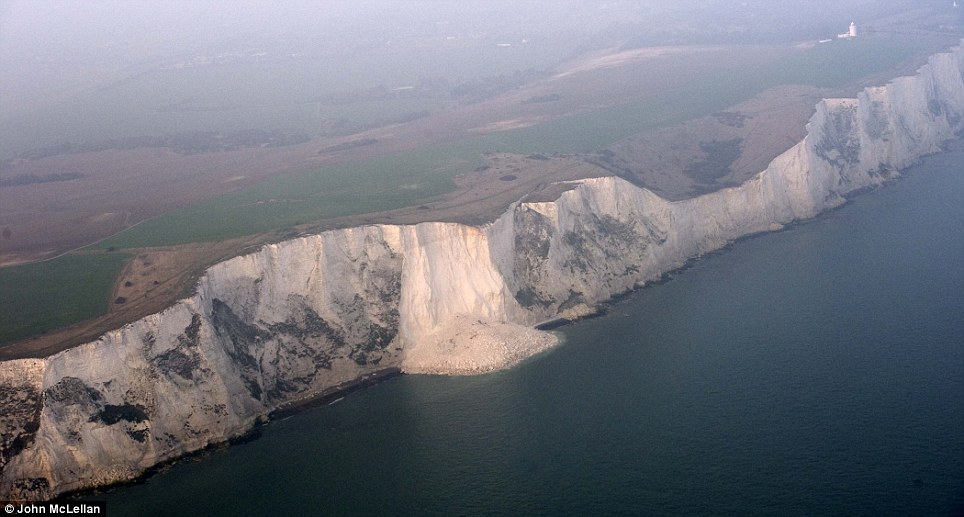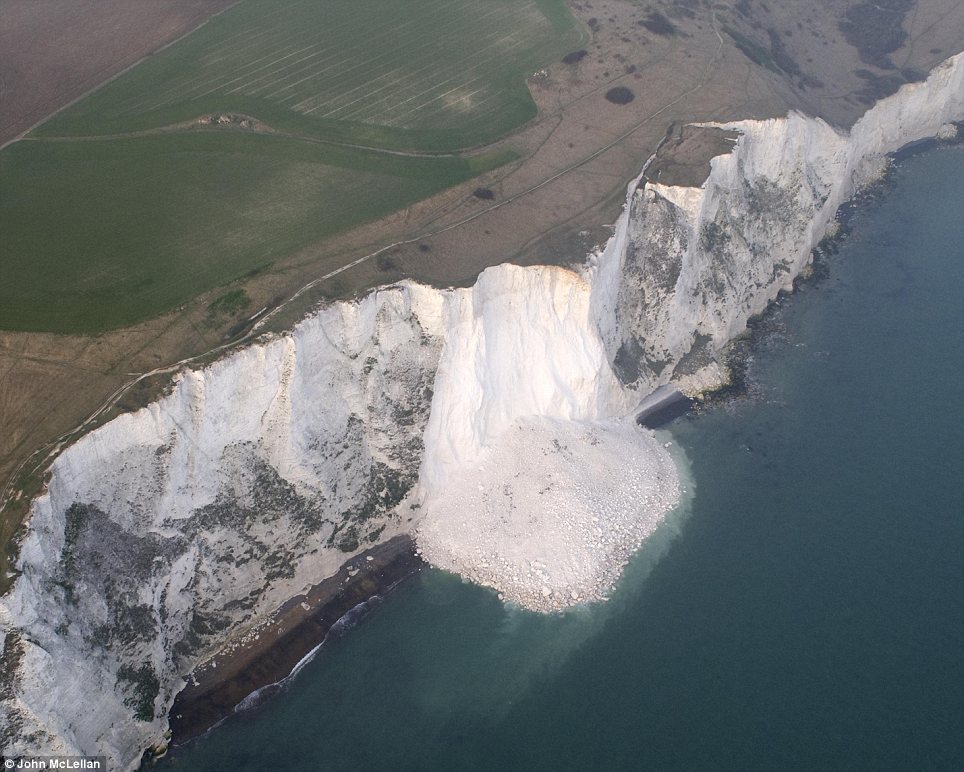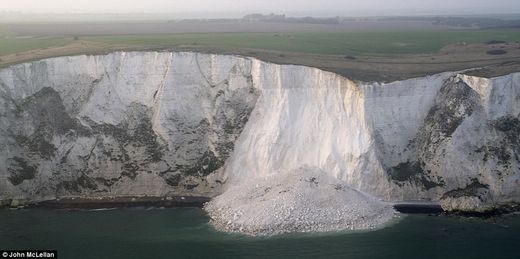Tons of cliff-face sheared off near an area known as Crab Bay, but no-one was injured, the coastguard said.
The collapse may have been caused by rain over the winter months being absorbed into the chalk and freezing.
The collapse may have been caused by rain over the winter months being absorbed into the chalk and freezing here.
It then may have caused cracks which slowly grew over time before huge chunks fell into the sea.
Dover Coastguard said a full survey has yet to be carried out to determine the exact amount and length of cliff that crumbled on Friday.
A spokesman said: 'We can see the start of it from where we are based but then it goes round the corner.
'It appears that it crumbled from the top at high water so there was no-one down below at the time. It was quite a substantial fall.
'No-one was injured but it does serve as a reminder that if people are walking along the cliff-top or underneath, that the cliff can crumble away.

The Kent landmark, popularised by Dame Vera Lynn's wartime song, has suffered large rockfalls before, most significantly in January last year.

Sam Wydymus, 40, co-owner of the nearby Coastguard pub, said the collapse had exposed a new all white section of the cliff which was not covered in moss.
He added: 'We didn't hear anything when it fell but it was big enough for people round here to be talking about it. The last major cliff-fall was in January last year when every emergency service turned up.
'That happened during the day and was quite scary, with people screaming on the beach saying it had fallen. When the cliff does fall, it is quite muted and sounds like a lorry going down the hill.
'There isn't any physical warning beforehand. When it happens, it just happens.'
A spokeswoman for the National Trust - which looks after parts of the chalk grassland in the area - said the cliff-fall happened between Langdon Cliffs and South Foreland Lighthouse.
She said: 'To alert walkers, the National Trust has sited several warning signs at several starting points of the walkways on to the cliffs.'
How the Cliffs were formed
On a clear day you can see right across from the Dover cliffs to the cliffs on the French coast at Cap Gris Nez, proof of the continuous strata of chalk.
About 70million years ago this part of Britain was submerged by a shallow sea. The sea bottom was made of a white mud formed from the fragments of coccoliths - the skeletons of tiny algae which floated in the surface waters of the sea.
This mud became the chalk. It is believed to have been deposited very slowly, probably only half a millimetre a year. In spite of this, up to 500 metres of chalk were deposited in places.
The coccoliths are too small to be seen without a microscope but if you look carefully you can find fossils of some of the larger inhabitants of the chalk sea such as sponges, shells, ammonites and urchins.
(Source: Dover Museum)




Comment: Considering the sentimental value the Cliffs have for the British people, a collapse of this magnitude could be taken as a symbol of their current state.